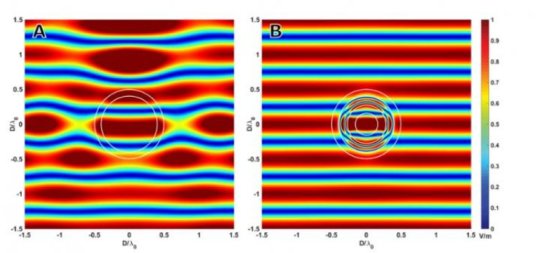[ad_1]
In recent years, invisibility has become an area of increasing research interest due to advances in materials engineering. This research work by the UEx, which has been published in Scientific Reports by the Nature Group, has explored the electromagnetic properties of specific materials which can make certain objects invisible when they are introduced into its interior, in the manner of fillers. Normally, artificial materials known as metamaterials, or materials with high dielectric or magnetic constants, are used
This idea for attaining invisibility using filler materials instead of external layers, was inspired by the Final-Year Project of Alberto Serna and Luis Molina, undergraduate students of Telecommunications at the UEx. “Although all of us think of the invisibility cloak of Harry Potter and this is the model that other scientists have used to invisibilize objects, up to now, the idea of fillers, previously suggested in the novel The Invisible Man by H.G. Wells, in which Griffin becomes invisible by injecting himself with a lightening agent,” explains the researcher Alberto Serna, who is currently working on his doctoral thesis in the Telecommunications Group at the UEx .
Serna clarifies that “the majority of the techniques with which cloaks of invisibility are developed harness the extraordinary properties of certain materials to make light circumvent the object to be made invisible.” Nevertheless, this model cannot be implemented using fillers, because the object is exposed to the light and therefore forced to interact with it. “We have used a different technique, plasmonic cloaking, which makes the object and the filler jointly invisible,” says Serna from Italy, where he is currently on a research stay.
In this way, the method makes it possible to achieve invisibility from the interior of an object without using any external device. In addition, invisibility using fillers allows the object to interact with its environment without being hampered by the external cloaking. The technique is valid for objects of small size, and the bandwidths achieved are still narrow, but the investigators believe the scope for further improvements is promising.
New applications
Luis Landesa, who led this work, contends that the idea of fillers opens up a new array of applications “because the fact that an object can “see” the outside without hindrance from external layers is novel and promising.” The researchers suggest applications which range from using non-solid materials to uses in communications and bioengineering. A typical example of the utility of invisibility is in invisible microscopic probes which do not perturb the device to be measured; with the use of fillers, in addition, the reading itself would not be altered, this being the problem posed by invisibility cloaks.
Story Source:
Materials provided by University of Extremadura. Note: Content may be edited for style and length.
[ad_2]















